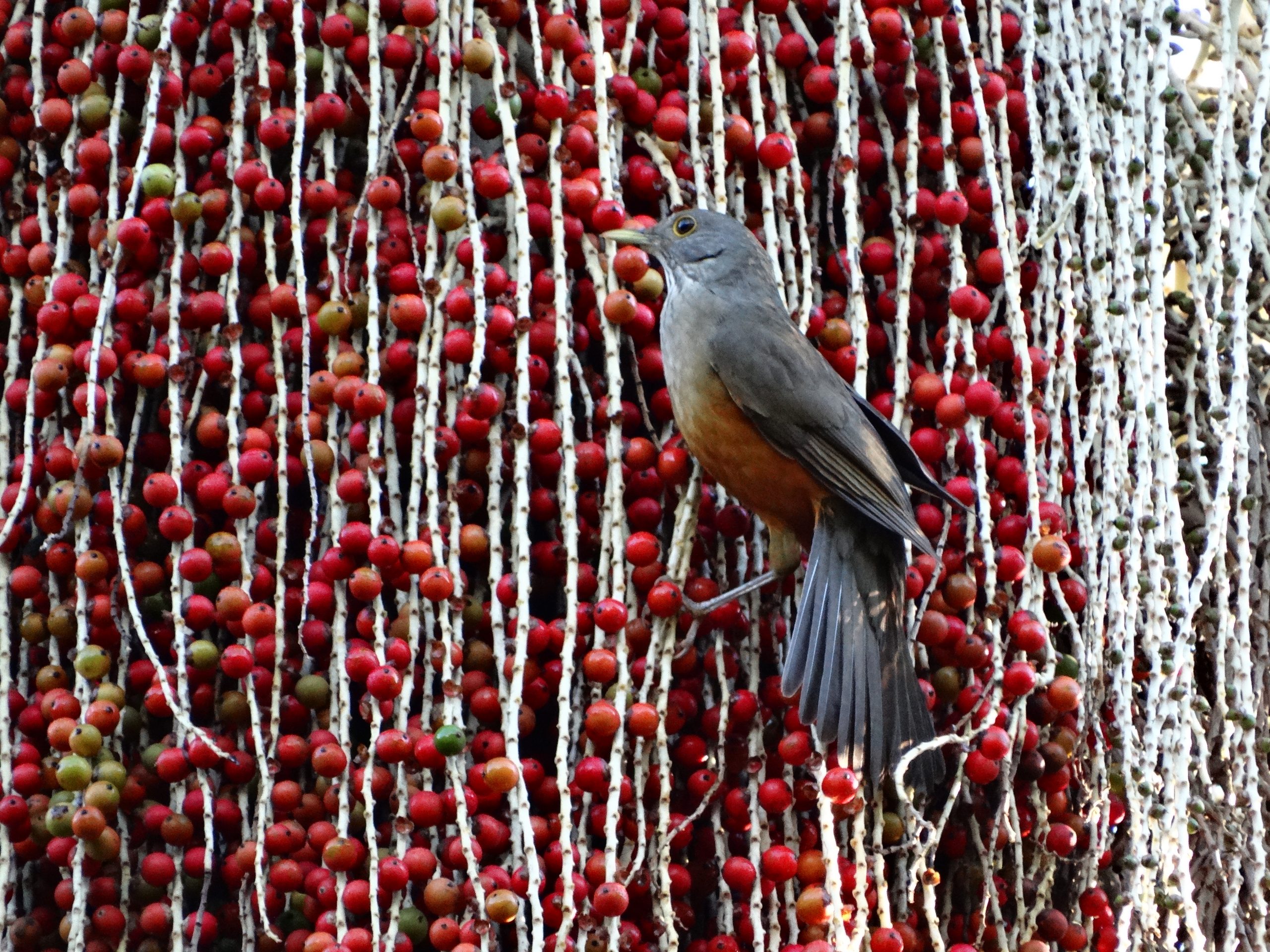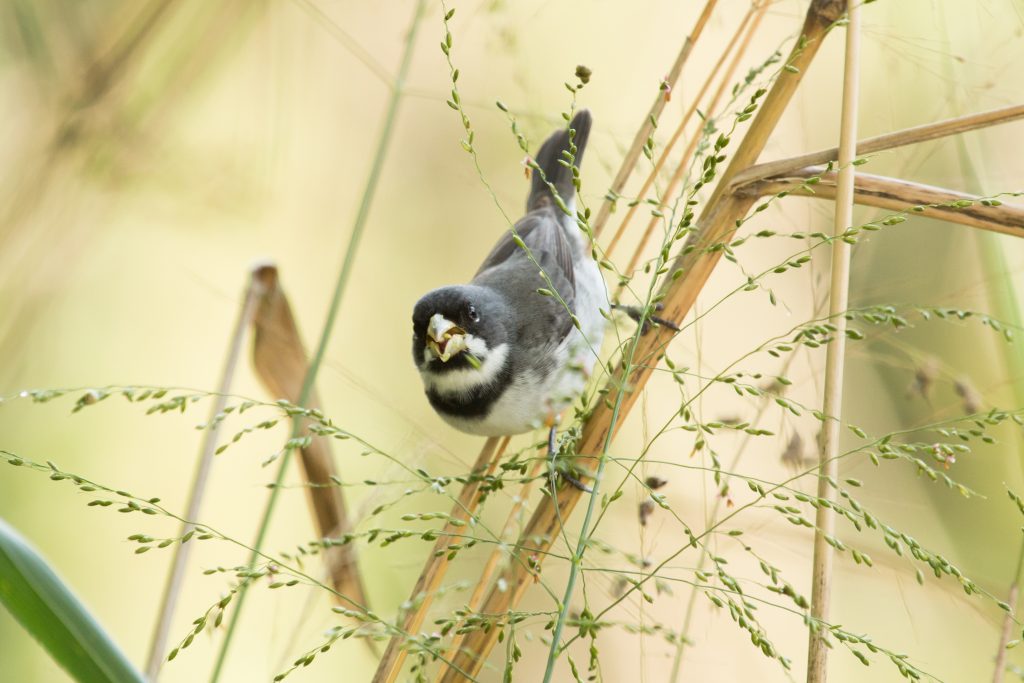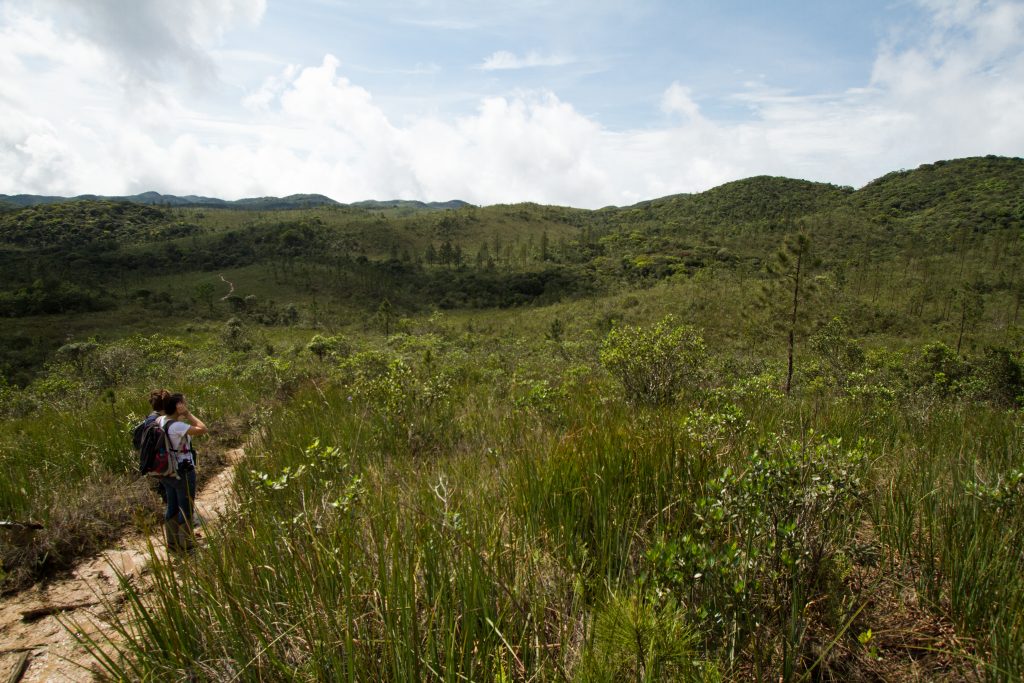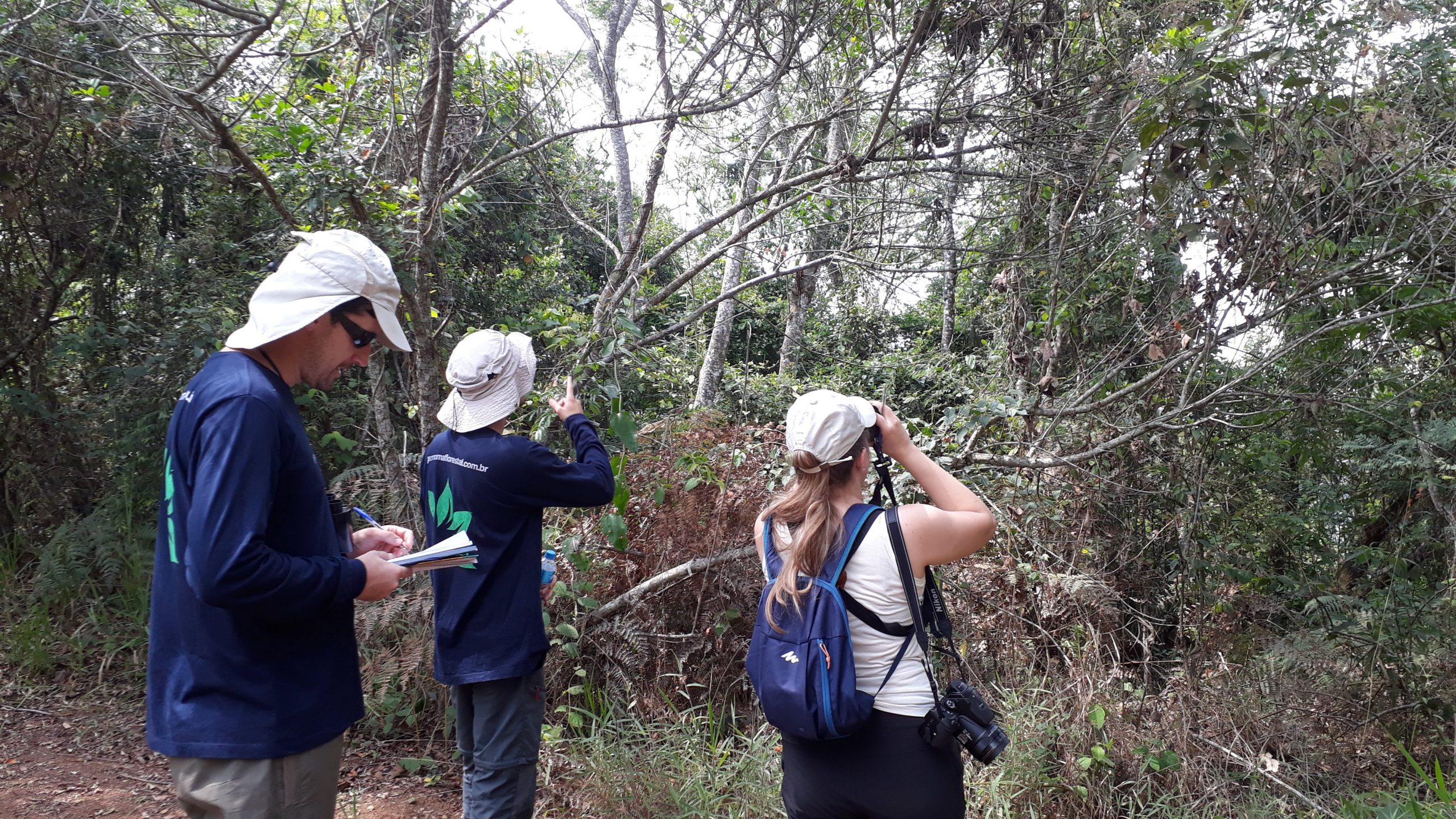Invasive alien plants

The problem with invasive alien plants
Invasive alien plants are a huge problem for Biodiversity Conservation. It is no wonder that several species on the planet are disappearing due to the introduction of exotic species, through a process called biological invasion.
Biological invasion threatens the survival of native species and the functioning of natural environments.
Plus, these risks can even affect the health and well-being of people because:
They affect environmental services;
- They can hurt the economy;
- They compromise the natural and genetic heritage
But after all, what is an invasive alien species?
By definition, an alien species is one that is outside its original distribution area, usually after its introduction into the environment by Humans. This species can become invasive when its introduction, reproduction and dispersal become a threat to native biological diversity.
So, not all alien species are invasive. The invasion always begins with the introduction of an exotic species that establishes itself and breaks an environmental barrier.
This means that it adapts well to new conditions and begins to proliferate wildly.
In this post, we will talk a bit about some of these cases.
Invasive species in Brazil
In Brazil, at least 365 potentially invasive alien species have already been identified according to the Chico Mendes Institute for Biodiversity Conservation (ICMBio)
Among them, 46% are plants and 54% are animals. Among the plants, 146 species are terrestrial, three are marine plants and only one belongs to freshwater. The ways in which these plants would have arrived and dispersed throughout the national territory are as varied as possible.
From the importation of species for landscaping to the accidental transport of garden pruning waste. The factor they all have in common is human influence.

The history of exotic plants in Brazil
The invasion of exotic plants in Brazil is a problem that has affected our biodiversity for a long time. It has been a problem left aside for years. Both by research institutions and by those who work with environmental conservation.
Only in the 1980s did researchers and conservationists begin to pay more attention to the problems caused by invasive species. As part of this scientific community, we have Dr. Vânia Pivello, today a professor of Ecology at USP and one of the pioneers in studies of invasive exotic plants in Brazil. She gave us some of her enormous experience on the subject during the 29th Environmental Meeting, promoted by Brasil Bioma and entitled "What are invasive exotic species and how to control them?"
Exotic grasses
Professor Vânia began her career working with African grasses introduced in Brazil. Today, we recognize three main species considered the main invasive grasses in the national territory:
- Capim-gordura (Melinis minutiflora);
- Brachiaria (Urochloa decubens);
- Capim-gamba (Andropogon gayanus)
Some of these species were brought to Brazil to be used in pastures and feed cattle. This is not the case for all species. Capim-gordura, for example, accidentally arrived on ships from the African continent.
The main problem with the introduction of these plants is their aggressive development in natural environments.
Andropogon grasses and several species of brachiaria grasses, such as U. decunbens and U. brizantha, are among the most dangerous alien plants invading the Brazilian Cerrado. This is because they absorb many soil resources, reproduce and develop quickly, winning competition with native grasses.
To make matters worse, brachiaria grasses produce substances that inhibit the development of other plant species. These substances are called "allelopathic" in Botany. They do this even when they are still in the seed stage. And thanks to these substances, these grasses kill and take the place of native species and proliferate uncontrollably in Brazil's natural environments.
Pine trees
Pine trees (Pinus spp.) are among the most common invasive plants in Brazil. Originating from the Northern Hemisphere, pines are trees that germinate and grow quickly, especially in open areas where there is plenty of light.
This species was brought to Brazil both for use in landscaping gardens and parks, and for use in reforestation. Due to their development characteristics, pines are interesting trees for the type of planting aimed at extracting wood for commercialization.
The resin extracted from its trunk also has several applications in the market. The problem is that the dispersal of pine seeds by wind has the characteristic of being very efficient when it comes to finding new places to settle.
These plants easily reach the native ecosystems present in the vicinity of where they were planted and there they begin to develop and then reproduce again.
Growing in open environments such as natural fields, these trees begin to shade smaller native plants, such as grasses and shrubs, compromising their development. They also compete with native trees for soil resources.
Even the leaves of pine trees also produce allelopathic substances in the soil when they fall to the ground, inhibiting the development of bushes and native trees, as well as the brachiaria grasses mentioned above
An example in the Atlantic Forest
Currently, the invasion of pine trees is so aggressive and problematic that several Brazilian Conservation Units (CUs) have problems with them.
An example of this is the Curucutu Nucleus of Serra do Mar State Park, the only Conservation Unit of the Atlantic Forest to shelter remnants of Campos Nebulares (Nebular Fields), natural vegetation formations that have a very peculiar fauna and flora within the Biome.
And it is precisely these cloud fields that are threatened by exotic pines. When pines grow into trees, they shade the surrounding native plants and steal nutrients from the soil.
As these native plants are mainly shrubs and grasses, they are at disadvantage in this competition and their development is compromised.
As there are plants that are characteristic only of this type of plant formation, which in turn is rare in the Atlantic Forest, this loss of biodiversity becomes even more serious.

The Australian Palm Tree
Another alien species considered invasive in Brazil is the Australian palm tree (Archantophoenix cunninghamiana).
It is a palm tree of the Arecaceae family that can reach 15 to 20 m in height and is native to Australia, as the name implies. Initially, the species was sent to Brazil for its landscape potential, since it develops well in gardens and sidewalks, has fast growth and is very showy.
The species was cultivated in abundance and today it is extremely common in parks and gardens. The Australian palm, grows much faster than native palms and have a greater plasticity in relation to the type of environment where it can develop, and it also produces hundreds of red and spherical fruits, very attractive to birds.
Birds are among the main dispersers of native palm seeds, such as the palmito-juçara tree (Euterpe edulis), an endangered species native to the Atlantic Forest.
Due to the enormous availability of fruits and greater abundance of Australian palm trees, native birds end up consuming much more of their fruits.
In addition to dispersing the seeds of the alien species and collaborating with its proliferation, native species such as the Juçara palm tree ends up being impaired in terms of the availability of dispersing agents that would consume its fruits.

Biological control of invasive alien plants
Adding to the imminent problems brought about by the invasion of alien species, the next concern is how to control these species. Generally, the best alternative is to eradicate the entire population of the alien species. There are several possible methods to achieve this goal with plants, including manual removal of individuals.
This is a complicated task, especially if the species has been introduced for a long time. Invasive plants are particularly difficult to eliminate because they are generally resistant organisms with efficient seed dispersal systems and rapid development.
For this reason, there are other management approaches that we can adopt in cases where eradication is not feasible.
The containment of invasive species is one of them. This method requires a lot of planning and time, consisting of applying ways to prevent the plant from further dispersing in the environment. The idea is to restrict its distribution to a few places and contain its proliferation, so that it stops spreading in natural environments.
When the exotic species are well established and already too widespread to be contained, the option for long-term management remains. Long-term managing consists of trying to control the situation of invasive alien species without great pretensions for solving the problem.
The main objective of this last approach is the constant control of the invasive population to prevent environments from being completely harmed and native species from being lost.
We must act to combat invasive species regardless of the approach, and this often requires a large investment of resources.
Unfortunatelly, the delay in taking action can make the problem even more difficult and expensive to solve. On the other hand, the lack of action can mean the extinction of native species, imbalance in the natural environments and even negative repercussions for the economy..
Invasive alien species and Environmental Consultancy
Knowing how to identify alien species in the field is an additional difficulty for the professional who works on Environmental Consultancy. This is because we generally specialize in working with native species, which we can find naturally in the study areas.
Knowing how to recognize alien species is essential precisely in order to recognize plants that may be invading a new area. Several times we carried out Environmental Consultancy work in areas already greatly altered by Humans or even urban areas.
It is common to have alien plants for use in gardening, landscaping and afforestation, which also need to be identified correctly. On the other hand, the presence of alien species can reveal a potential conservation problem in an area of native vegetation, such as a Conservation Unit, for example.
Even worse, it could be a newly introduced species with great potential to become invasive. In this case, prior identification and monitoring of the population of an invasive alien plant makes it possible to develop control strategies for this species before it becomes a major problem.
Do you see how the support of well-trained and prepared professionals can make all the difference in an Environmental Study? The environmental consultant able to identify alien plants and recognize the invasive potential of a species can be the differential to ensure that the best measures and conclusions are taken about the management of a given area.
Learn more about Geonoma's work and get in touch!



